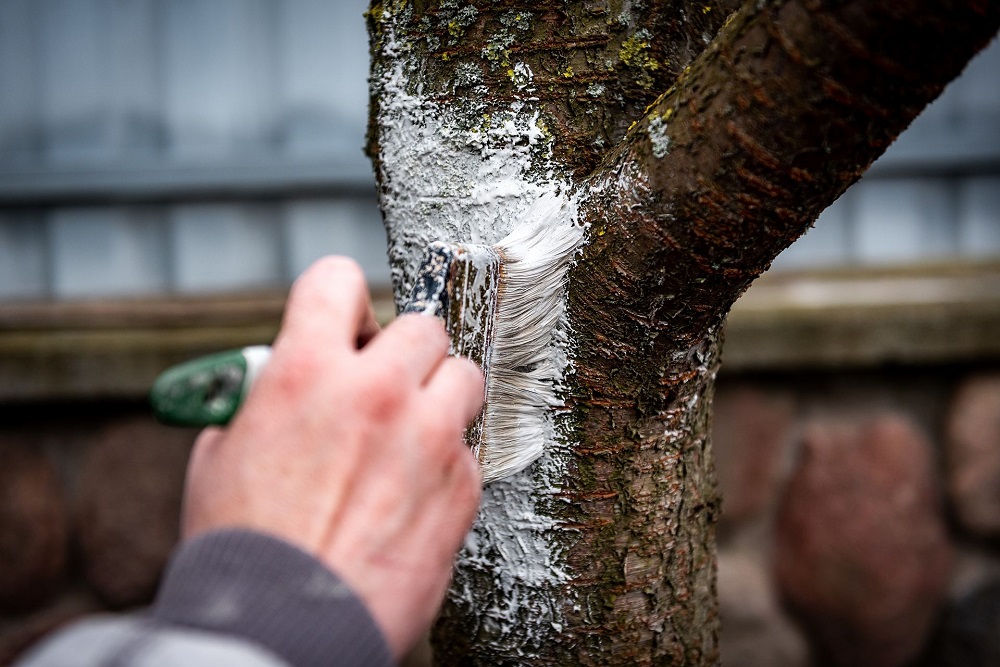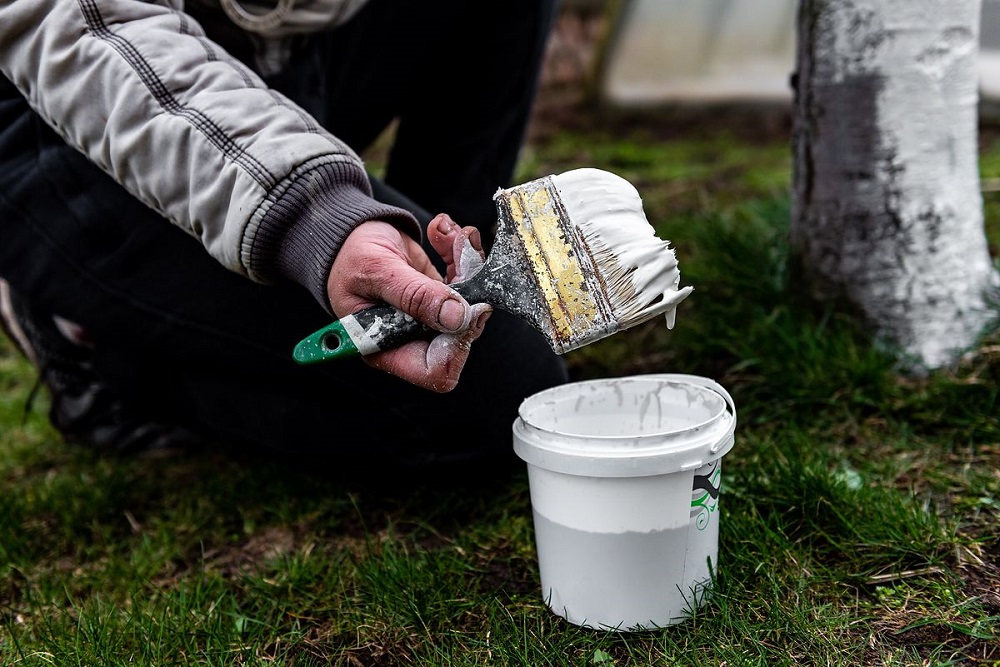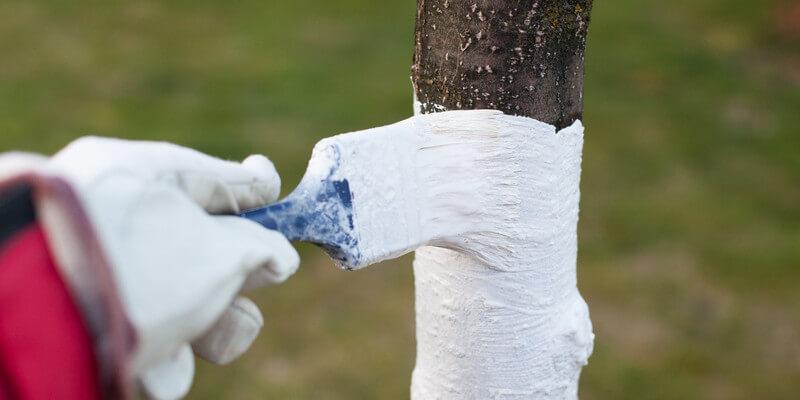Whitewashing Trees? Check Why and How to Use Tree Trunk Paint
Many think whitewashing is unnecessary and don't bother to do this procedure. Is it rightly so? Limewash is one of the best way of tree trunks and bushes protection. Have you never heard of painting tree trunks and have no idea why, how and, most importantly, when to do it? Check the benefits of painting tree trunks and how to do it correctly.

What is whitewashing in gardening?
Tree whitewashing is a simple care treatment performed annually in gardens located in cold hardiness zones. The trunks of fruit-bearing and other, larger trees, as well as ornamental shrubs are covered with special paint, more or less half of their height.
Although this method has been forgotten by many yard owners, professional gardeners often use whitewash - that’s how you can recognize them!

Why painting tree trunks with lime?
Limewash, often called whitewash, is a product used to protect tree trunks against changing weather conditions. Temperatures fluctuate in late autumn, winter and even early spring, with extreme differences during the day and at night. Tree trunks get warmed up in sun during the day, and, when exposed to cold temperatures at night, they tend to break. So-called cold injuries might appear. Trees and shrubs affected by such damage might not recover in spring.
Thanks to white tree trunk paint, sun rays aren’t completely absorbed, but most of them gets reflected. As a result, the trunk doesn’t get heated up and the risk of damage at night is much lower.

When do you use limewash in the garden?
Make sure to do whitewashing in your garden before the daily and nightly temperatures begin to fluctuate. Many gardeners decide to use limewash in their trees at the end of November. But it shouldn’t be done later than mid-December, as the plants are much more likely to get damaged by then.
Such gardening works should be finished by the official beginning of winter, that is, December 21.
What kind of tree trunk paint should I use?
Experienced gardeners use so-called milk of lime. What is it? It’s simply a solution of calcium oxide in water. The recommended proportions are 1:5. It means one needs 5 liters of water per 1 kg of burnt lime. Make sure to stir everything thoroughly, and the limewash solution is ready to use.
If you have no prior experience and are concerned that you’ll do something not right - use store-bought products. Most gardening shops offer whitewashing products such as paint for tree trunks - at an attractive price.

Painting tree trunks white - how to do it?
Whitewashing can be done on both young and old trees. Both are vulnerable to changing temperatures and difficult to cure injuries.
Painting tree trunks with lime is easy. If you have a prepared solution or a ready product, just dip a brush in it and simply paint the tree trunks - more or less up to half of their height, or up to where branches begin.
Sometimes, gardeners decide to apply the protective layer to the branches of very delicate fruit trees. While it won’t harm the tree, it’s a guarantee that it will survive winter if a serious weather anomaly occurs.
Do you have to repeat whitewashing?
Depending on the weather, you might need to repeat the application of limewash on your trees. When does it happen? Most likely if you decided to whitewash the trees in December, when the weather is rainy most of the time. If so, it’s natural that a part of the protective layer gets washed away with the flowing water.
You also have to repeat whitewashing if the changing temperatures and frosts keep occurring for quite a long time. Sometimes, forecasts predict them in March and April. If so, the trees have to be secured again between January and February.
How can you protect tree trunks except from whitewashing?
Whitewashing is one of the simplest, quickest and at the same time cheapest ways to protect gardens in winter. But it doesn’t mean gardeners don’t use other methods - most of them don’t guarantee such good results, however.
White landscape fabric is a good alternative for whitewashing. It’s used to wrap tree trunks as a way of protection against low temperatures.
Farmers who cultivate crops use straw collected during harvest. But it works only until a certain moment. Its effectiveness drops along with the temperatures.

📍 How to whitewash tree trunks?
Tree trunks are typically painted with limewash, which is a solution of burnt lime and water. You can also use a store-bought tree trunk paint. You also need a large and soft brush, and time to paint all the trees in the garden.
📍 When should I paint the trees with limewash?
Trees whitewashing should be done before first frosts appear, that is - in late autumn or at the beginning of winter. It's advised to do it earlier, so the weather doesn't surprise the trees and doesn't damage them.
📍 Is whitewashing effective for fruit trees?
Tree trunk paint is one of the most effective and cheapest methods to protect fruit trees. Keep in mind that in case of intense rain or snowfalls, you have to repeat whitewashing.
📍 Painting tree trunks with lime - is it difficult?
Whitewashing tree trunks is an easy task even for inexperienced gardeners. All you need is some limewash, a soft brush and some knowledge you can find on the Internet.
Featured articles




